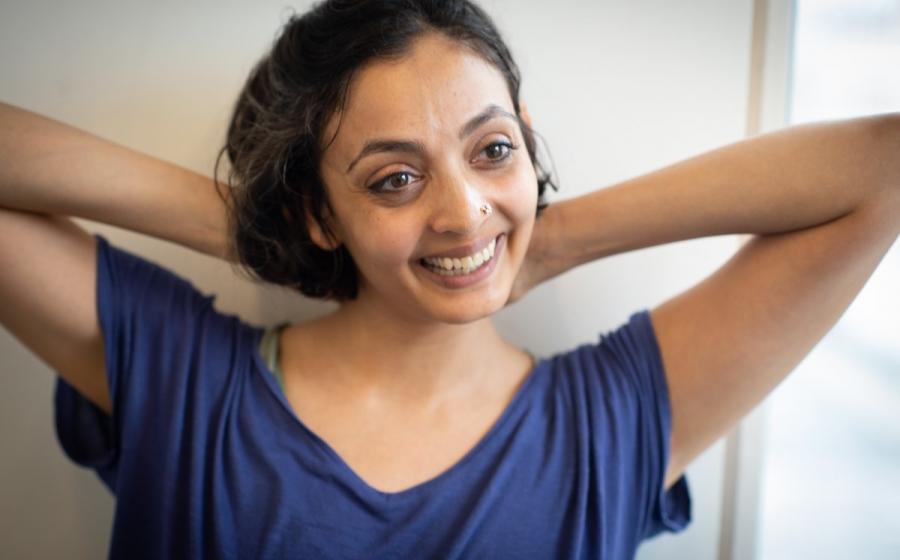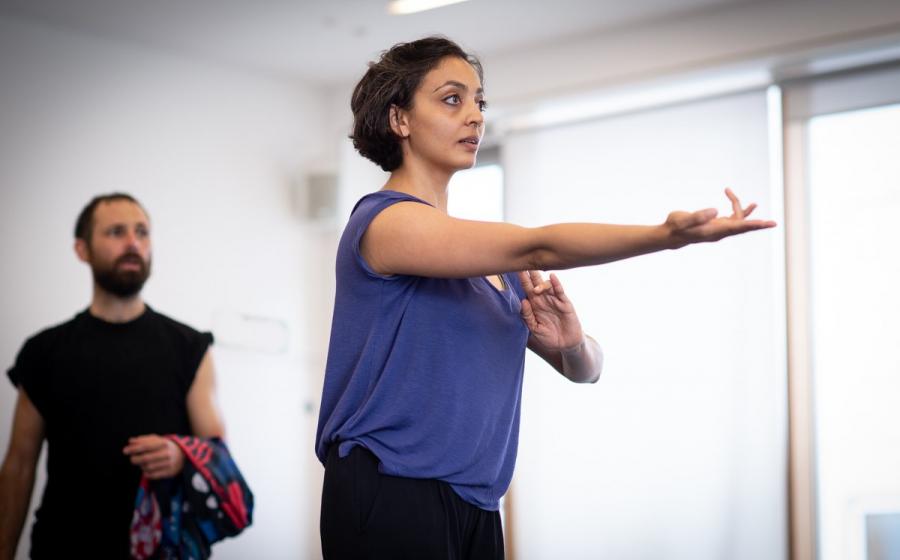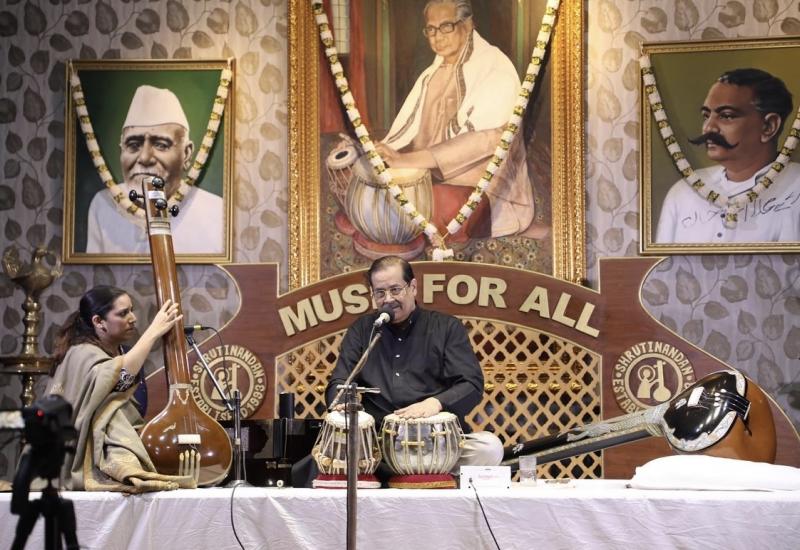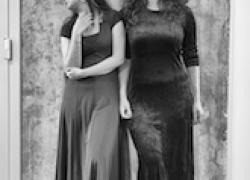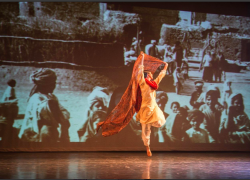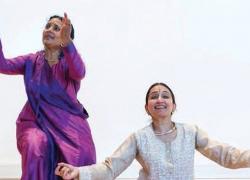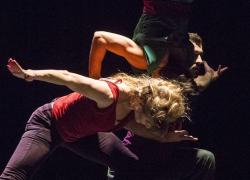Seeta Patel- On Weight of an Iconic Score
Seeta Patel is spearheading some of the most exciting bharatanatyam developments in the UK. She spoke to Shivaangee Agrawal about her work, about fear, about education. The Rite of Spring premiers 9 May at Dance City, Newcastle followed by a national tour. This is an edited interview.
We followed the Dance Dialogues project over February and it all felt very exciting: three contemporary dancers and three bharatanatyam dancers together in the studio. What impact did you want this to have on the contemporary dance sector?
Ultimately the whole premise of the project was to shift some of the conscious and unconscious biases that exist around these forms in both the South Asian and the contemporary dance sectors. Even within the South Asian sector we exoticise ourselves, without even being aware of it; there can be a gross championing of what we do; or we are apologising for what we do because we don't think it’s valuable. We try to contemporise our dancing without mining our true skills. In the contemporary dance sector there can be a pigeon-holing that isn’t acknowledged or appreciated. When the choreographer doesn’t know your stylistic background, this can undermine creative potential and opportunity. That translates into work not being seen on bigger stages and so on. It's a very tangled and complex problem.
BBC Young Dancer is another talent development project that you've been involved in from the outset. This year you were the category-final judge for the South Asian dance category. What about BBC YD is exciting for you?
Raising the profile of a South Asian dance form is exciting. I know that in the first year, the South Asian category was one of the most viewed. There's a selfish part of me that thinks that raising the profile is good so that my when I present my work, people will be more familiar with it. And then there's just the wider feeling that we need to see more, different things. Dance on TV can fall into a very showbiz line of aesthetic and I think BBC YD can show the wider public that dance doesn't just mean doing the splits and spinning, especially with dancers in the South Asian category, who are really embracing the abhinaya aspect of dance.
You've interacted with a wide cross section of young bharatanatyam dancers as a teacher, mentor and even judge. What do you see as some of the key things that they often miss out on in their dance education?
Often there are some basic things lacking, like body conditioning and having an all around education; and though I'm quite an old-school teacher and require discipline in the studio, I think the habit of not questioning, and instead absorbing everything and taking it away to decipher isn't necessarily the right interpretation of respect. Not questioning anything and just doing what you're told to do is inherently stagnating. What kind of potential artist is that creating?
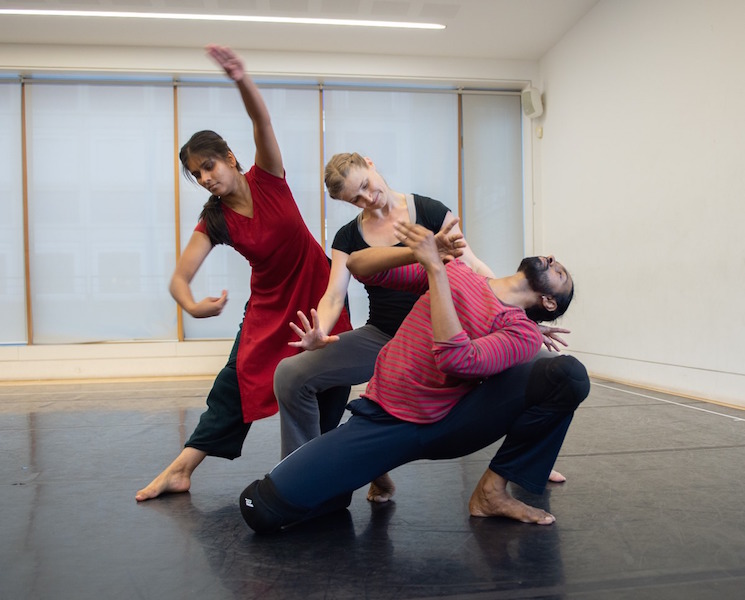
What you require from bharatanatyam dancers often involves non-traditional skills – things like contact, being in very close proximity, being very aware of each other, extending limbs and movement beyond their traditional locations in space, even just being able to lean without falling! Would you say that your choreographies in this sense require bharatanatyam education to be broader?
I'm reticent in saying that I’m doing something groundbreaking. That is my line of enquiry, just as others might choose abhinaya or literature as their way of generating movement. Mine is ensemble work that is more dynamic, broader, wider, more exciting. My interest is in nritta but there’s deeper enquiry everywhere to be had. Some of these explorations are either stifled or feared or not seen as valuable.
Who instills that fear, where does that stifling come from? You could understand it existing somewhere conservative like Chennai, but in the UK, we have a very progressive environment, don't we?
I have no doubt that there are others who, like me, feel a sense of responsibility to their teachers and their lineage. There is a fear of doing it wrong, a fear of trying something new. It’s not just a pathology within bharatanatyam, though I think it's probably magnified within it. Maybe contemporary dancers feel the same but they are less afraid of making mistakes or needing to be liked by everyone. Are there younger contemporary choreographers who feel they have to copy their seniors in order to be taken seriously? I feel the silent fear that I will never know enough and my training will never be enough. How do I make sure my practice has integrity even if I don’t have the support of my seniors or those around me? How do I make sure that that doesn't undermine the fact that I have something to say and something to try?
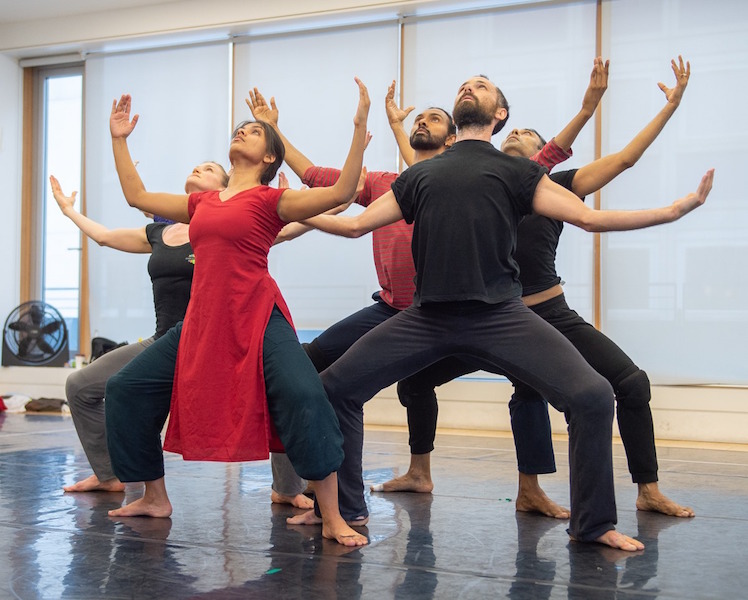
Well it seems that year on year your work is thriving! Coming up very soon is the UK tour of your The Rite of Spring, which premieres in the UK on May 9th, and in London on May 17th. What has this process been like for you?
It’s scary and exciting for me to do The Rite of Spring. I feel the pressure; the weight of this iconic piece that a lot of people have seen done by some of the greatest choreographers and dance companies. This is me trying new things with bharatanatyam and its potential, rather than me coming in and being an all-knowing person, with some of the vulnerabilities involved in that; they’re not often seen. And I’m glad about that.
What’s been the biggest challenge of this work?
Because of the music’s wild pulsing nature, I was worried that the clean, refined lines of bharatanatyam would not find the visceral depth in the way other choreographers and dance styles have been able to do, but I was proved wrong once in the studio because the impressive footwork and full-bodied movement were more than enough to create the required power. Also, bharatanatyam doesn’t have partner work that involves weight bearing, lifts or physical touch and so I’ve had to find other ways to connect the dancers bodies to remain true to the heart of the form but also true to the relationships I needed to create.
At Pulse we can’t wait to watch the show. Watch this space... And buy your tickets before they sell out!

